Figures & data
Figure 1. Images of the transfer support robot “Resyone Plus” (Resyone) developed by Panasonic AGE-FREE Co., Ltd. (Osaka, Japan) (a). Resyone is a type of transfer support robot that is a combination of an electric care bed and a wheelchair, with half of the bed separating at the touch of a button to function as a wheelchair as shown in panels (b–d). The images used in this figure were kindly provided by Panasonic AGE-FREE Co., Ltd. with permission for use in publication. The person using this robot and the person on the bed are both models and not participants in this study.
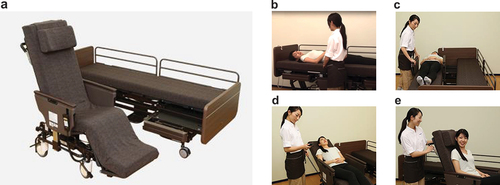
Table 1. The average height and weight of the caregivers in the unit in each phase. Height was shown by centimeter and weight by kilograms.
Figure 2. The life pattern of the care recipient, and the staffing levels required for each transfer of the care recipient during three 1-week periods: 1 week before (Phase 1) and at 3 weeks (Phase 2) and 11 months (Phase 3) after the introduction of Resyone. Orange and blue circles represent transfers by two caregivers and a single caregiver, respectively. From the care record survey, we confirmed that all transfer assists were performed using Resyone in Phases 2 and 3 (i.e., by detaching one side of Resyone and transforming it into a wheelchair).
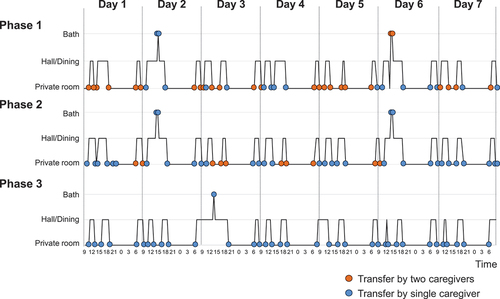
Figure 3. Ratio of the number of staff required for assistance (a) and the number of transfers at each staffing level (b) over each phase before (Phase 1) and at 3 weeks (Phase 2) and 11 months (Phase 3) after the introduction of Resyone among 17 caregivers. Blue and Orange circles represent transfers by a single caregiver and two caregivers, respectively.
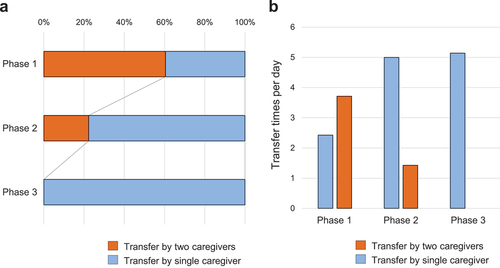
Figure 4. Heart rate difference before and after transfer assistance by a single caregiver without Resyone (left, n = 5), by two caregivers without Resyone (middle, n = 3), and with Resyone (right, n = 4) measured using a wearable heart rate monitor. All data plotted were calculated from transfers between a bed and wheelchair (i.e., “without Resyone” was between a conventional bed and wheelchair; “with Resyone” was between the Resyone bed and wheelchair).
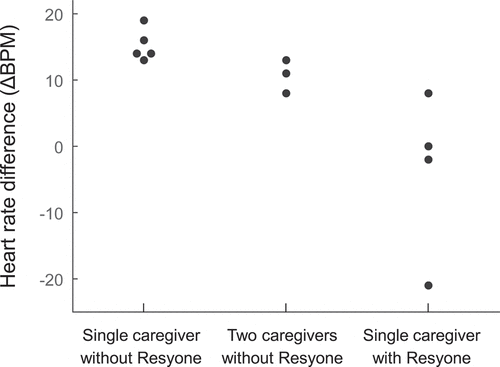
Figure 5. Results of the questionnaire survey conducted after the introduction of Resyone in Phases 2 and 3. The questionnaire consisted of the following questions: 1) Was physical burden reduced by using Resyone? (a) and 2) Could effective assistance be provided by using Resyone? (b). The questions were answered using one of the following four options: “Agree,” “Somewhat agree,” “Somewhat disagree,” and “Disagree.” A total of 12 caregivers responded in Phase 2 and 13 caregivers responded in Phase 3. For each question, the total number of caregivers is shown in the bar chart.
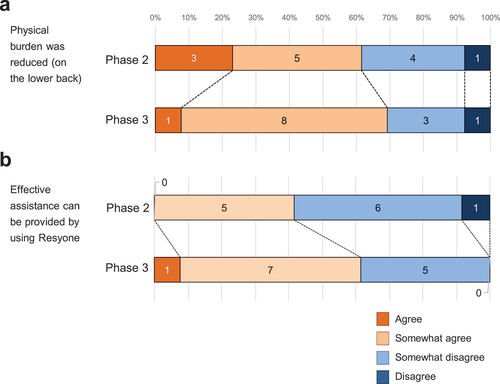
Supplemental Material
Download MS Word (17.8 KB)Supplemental Material
Download MS Word (26.1 KB)Data Availability Statement
The datasets analyzed during the current study are not publicly available given that the research team has not completed its analysis, but are available from the corresponding author on request.
